Armed Forces Minister Luke Pollard has signalled his support for a future expansion of the RAF’s Wedgetail fleet, citing improved economic conditions and growing defence budgets, amid continued scrutiny over the programme’s delays and reduced size.
Speaking in Westminster Hall on 16 July, the minister acknowledged that delays to the E-7 Wedgetail had left a critical gap in the RAF’s airborne early warning capability but said delivery was now on track for 2026. He also echoed growing cross-party support for restoring the original five-aircraft fleet size, up from the three currently on order.
“Disappointingly, the E-7 Wedgetail programme has experienced delays,” the minister told MPs. “These are due, first, to wider challenges faced by the global aviation industry… and, secondly, to more specific programme issues, including complex certification work that Boeing has had to undertake.”
He emphasised that “test and evaluation are now under way”, with a Wedgetail aircraft set to participate in the Royal International Air Tattoo this week, and added: “We are working flat out to get a fully compliant aircraft into service as fast as possible, and we are holding suppliers to account.”
But much of the debate focused on the earlier decision to reduce the RAF’s order from five to three aircraft in 2021, a move widely condemned by the Defence Committee. Labour’s Luke Akehurst pressed the minister to reconsider the decision.
“Does the Minister agree that upgrading this fleet of aircraft would be easier if there were five airframes?” Akehurst asked. “That would allow one of the five to be taken out of service for an upgrade. It is logistically more difficult if we stick with three airframes.”
Pollard responded affirmatively. “My hon. Friend makes a strong argument. I support the wording of the strategic defence review, which talks of possibly buying more E-7 Wedgetails when the economic conditions allow.”
He pointed to the government’s long-term defence spending commitments as a reason for optimism. “Thanks to the decisions taken by the Prime Minister, we will be spending 2.5 percent of GDP on defence by April 2027, 3 percent in the next Parliament and 3.5 percent by 2035,” he said. “For the first time in a very long time, there will be a rising defence budget in the next decade.”
Framing Wedgetail as both an operational asset and an industrial opportunity, the minister said the UK is aiming to become a key partner in its global sustainment and export.
“Our long-term aim is to grow the UK industrial base in support of Wedgetail, including potentially to support NATO and other global customers as they commit to E-7 in future years,” he said. “We have to ensure these platforms are exportable, that there is a work share for British companies, and that defence can be a real engine for growth.”
He promised further detail in the coming months. “Members will also know that we hope to publish the defence industrial strategy in due course and, towards the end of the year, the defence investment plan. That will set out what we are spending, not just on kit and equipment, but on infrastructure and people.”
Though critics remain concerned over the capability gap left by the Sentry’s retirement, the minister said confidence is building as the aircraft nears operational testing. “This is a detailed process to demonstrate that each system operates as designed. The aim is to bring this vital platform into service without compromise.”
Pollard concluded with a clear message to industry.
“As a new Government coming in, we committed to look at purchasing new E-7 Wedgetails, as part of the recommendation in the SDR, when the economic conditions allow. That is a vote of confidence in the platform, and it is part of our ambition to improve defence procurement. Boeing and the partners in the supply chain should be in no doubt that we expect the aircraft we ordered to be delivered, to be operational, and to make a valid contribution to filling the gap that the last Government created when they axed the previous aircraft providing this capability. I am happy to ensure that a copy of the detailed notes are shared with the House, so that answers to the questions put to me are properly provided.”


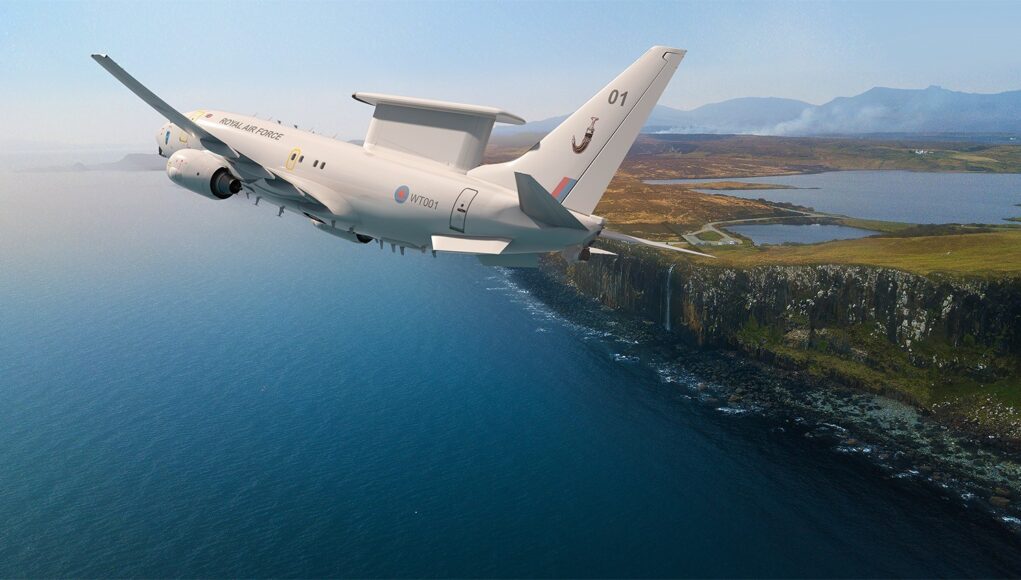
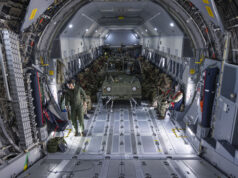
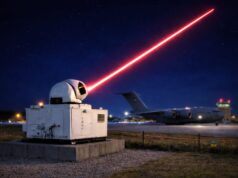

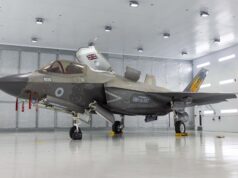
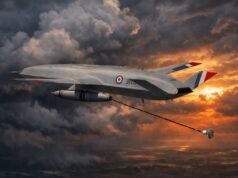

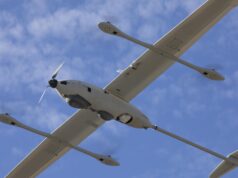


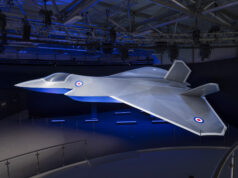

Boeing became disillusioned when we reduced the order to 3 – even though we had already bought the radars. The government should recognise the urgency related to the current lack of airborne radar provision, reinstate the order and lets get things moving
The new SoS Defence Healey should also revisit the numerous MoD decisions to retire assets before the replacements are available. Particularly the Albion class amphibious ships
It could well be the lack of skills in the outfit doing the conversion coupled with MoDs nightmare certification regieme?
The conversion wasn’t given to BAE or Marshalls who have plenty of competent people.
Neither Bae or Marshalls wanted the job. Mucking about with second hand airframes to meet standards they weren’t designed for is a fools business.
If a company with vast military contract experience, like Marshalls, don’t want to know, its a massive red flag, with an accompanying neon flashing sign that says ‘ don’t touch ‘.
The whole programme is a ridiculous mess. We should have just purchased the SAAB system, it works and we could have had 5 in service years ago.
The SAAB system is worse
I see a lot of people on here stating that Boeing is disillusioned, like it’s some lost child.
Is there actually a statement from Boeing to back this up? I can’t find anything.
To my knowledge Boeing is doing everything it can on this project and fucking it up like it does with almost all its projects.
The prize is not delivering two more aircraft for the UK but dozens for the USAF and NATO.
What is Boeing’s role in the UK Wedgetail project, do you know Jim? Are they the overall lead system integrator or something? Only the airframes we bought were 2nd hand, were they not and, is it Northrop Grumman who provide the RADAR? If we’re still interested in, say, two more aircraft and we’re considering 2nd hand, low-mileage, airframes then I doubt we’ll get the same bargain purchase price we bought the original 3 for ….. so maybe new airframes from Boeing?
Second hand ones are now worth their weight in gold and the waiting list for news ones is years long.
The E7 can only go into a 737 700 NG airframe which is out of production.
E7 is a Boeing product with a radar from Northrop.
We do seem to have a real skill for buying relatively little ourselves and then holding the hand of others through support contracts. Nice work if you can get it.
So the extra two are now bait to get a wedgetail support facility in the UK. Not sure it’s going two work or really that strong leverage.. well we ordered 5 but said we only wanted 3, when we knew we actually need about 9..and we now know we are going back to 5 but before we do we want an industrial concession…. Weak but worth a play. Now if we ordered 9 to be built and maintained in the UK, knowing that NATO want to buy wedgetail, we could then sell NATO 3 straight of the bat from the production line..that would be a strong position.
It’s always about ling term and when economic situation allows, it’s depressing! There is a complete failure on the part of UK politicians to understand why we actually need an armed forces!!
It’s good this is being raised and the government is not shooting it down. An E7 fleet increase would seem like the most important and lowest cost upgrade to UK air defence and the best capability we can provide to the USA and NATO.
And what about some additional P8s? 3 more? More?
A p-8 reportedly costs $242m. Do we know how much it would cost to buy 2 more B737 & convert them to E-7 with the radars we have already bought?
The MOD stated it saved £700 million by dropping down to 3 aircraft from 5 so you be looking at at-least £700 million to go back to 5.
£700m !!!! That has got to include maintenance, spares and training costs over some period of time… Surely that is not just airframe cost and integration?
Cheers CR
We are paying about £1.9 billion for three so yes £700 million sounds about right.
I thought it was £300 million myself.
It is like trying to nail jelly to the wall. Does the £700m account for the fact we had to buy five radars? So it could be your £300m DM, or it could be £450m? Or £700m? With the MoD it is hard to tell.
Hi John.
Indeed mate! I just recall the outcry that the cut to 3 was only making a paltry saving, which regards MoDs huge budget 300 million is.
Not worth it unless they’re more cash strapped than feared due to HMG.
Noting the old ‘when economic conditions allow’ caveat thrown in there, this doesn’t signal any commitment at all.
Indeed.
Maybe. Some day. We’ll look at it.
Perhaps.
In 2030 or 2035 when it won’t be our responsibility.
Standard HMG.
Hi mate,
The daft this is if they want to generate economic growth they need to drive it forward. Sitting back and talking a good talk and then cross your fingers just isn’t going to work. So if this government is serious they need to pick the pace up, and use defence to drive economic growth and wind in secondary cost benefits into the cost equation for all procurement projects. That way I would expect that buying a few more of pretty much anything will extend the production runs and bed in the financial benefits with the local economies around the country.
So they are talking about buying more E-7 when economic conditions allow. Stupid. Commit to completing the final 2 examples now to keep the line hot then order at least 4 more to bring the number up to 9 aircraft, but order them on a one per year delivery cycle to extend the life of the production run. With the extra number and time negotiate with Boeing / NATO for a workshare at a plant that is integrating these platforms in Europe, namely, Birmingham. Result, leveraged economic growth and a proper capability for the RAF (although 9x is a bit on the small side for a peer on peer conflict, no pleasing some 🙂 ).
Economic conditions allow… take control show leadership… muppets!
Cheers CR
Mate.
That they probably won’t says it all.
The country is run by amateurs, not businessmen, engineers, scientists, those who lead their fields.
But, people tell me, that is why they have the civil service.
So why are they not advising as such? And do they have any expertise? Or just more yes men and women?
It’s why I’m so sceptical about HMG on this forum.
They have no interest in defence as the public have no interest.
And public interest means votes to these people.
To me, politicians are becoming more obsolete by the day.
Cuts to the civil service have seen the key skills dumped and the paper pushers retained. Hence yes people remain. When I joined the tech civil service one of the reasons given for doing research work was the MoD would understand the technology if they decided to buy the kit, not that we would necessarily develop our own versions. It was considered important that we were an intelligent customer. Most of the research and develop capability within the civil service was sold off cheap into QinetiQ siginifcantly cutting down MoD’s knowledge base…
Short termism. This government is claiming to be planning for the long term but developing plans for complex projects takes time, and they don’t come any more complex than running a nation state. They don’t have much time, in part because so much time was wasted by previous administrations and partly because voters are already making up their minds. We are living in impatient times and I suspect that the good intentions of long term planning might well backfire which will be noted by other parties so good bye long term planning as a role for government…
They need to come out and state their intentions so that industry can start to plan and respond, they don’t have much time left before their futures are pretty much decided by voters. It will take time for voters to notice any turn around and switching to long term strategic planning and development is a 10 years / 2 parliament project at least, so they needed some quick wins and they blew that by overplaying the ‘tough decisions’ needed card early on.
They might be able to turn things around.
We will see..!
Cheers CR
Question for politicians: do hostile countries only attack when economic conditions allow?
This formulaic response sounds just like the stuff in the 30s and again post 45 when politicians decided that we would get 10 years advance warning of any impending major war, so we didn’t need to actually prepare for it now. So now we get a raft of announcements and vague promises, few if any of which will result in extra capabilities before the early/mid 2030s. Hope the bad guys are prepared to wait that long.
The reduction from 5 to 3 airframes has to rate as one of the most whackadoodle decisions in an admittedly long list of whackadoodle decisions.
A lot of them saving bog-all money.
Well, while having five Wedgies is better than three Wedgies, we’ll probably need more than five Wedgies to monitor what’s going on in the Arctic as well as Europe. Perhaps it’s time to ask if the Wedgie was the right choice un the first place?
We’re not getting anything else
With current delays, committing to “looking at” extra Wedgetails is a nice cop out. It sounds like an increase is in the offering but the reality is the Govt knows full well they don’t have to make any decision or real commitment anytime in the near future. And even if they do, they have years to change their minds again.
With any of these issues at the moment, the government position will almost all be ‘wait and see’. And actually there is an element of sense there. We know that in a few months time they are going to release a major equipment plan and industrial plan. There is no way they are going to spend the next two months drip feeding purchase information out ahead of that plan.
Now whether the plan needs to wait that long, that may be a different question, I don’t know. But given that we know it’s coming there’s not really much to be said or done when ministers say some version of ‘what and see’.
Yawn, wake me up when there is some actual news and HMG are ordering anything worthwhile. Otherwise I will be asleep at the back.
cheers